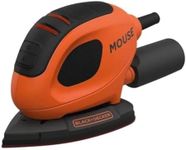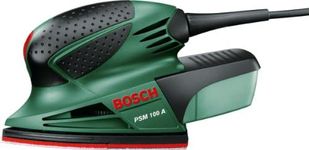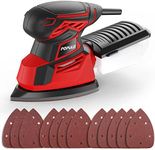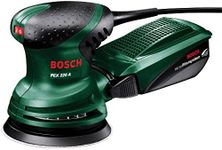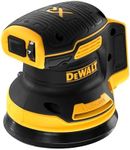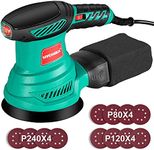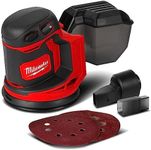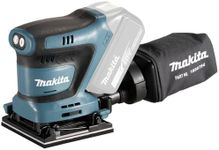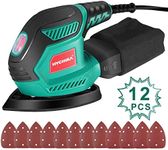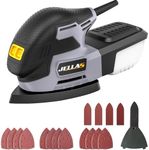Buying Guide for the Best Electric Sanders
Choosing the right electric sander can make your woodworking or home improvement projects much easier and more efficient. Electric sanders come in various types and sizes, each designed for specific tasks. Understanding the key specifications will help you select the best sander for your needs, whether you're smoothing surfaces, removing paint, or preparing wood for finishing.Type of SanderThe type of sander is crucial because it determines the kind of work you can do with it. Common types include orbital sanders, belt sanders, and detail sanders. Orbital sanders are versatile and suitable for general sanding tasks, while belt sanders are powerful and ideal for removing large amounts of material quickly. Detail sanders are perfect for small, intricate areas. Consider the type of projects you plan to undertake to choose the right type.
Power SourceElectric sanders can be corded or cordless, and this affects their convenience and power. Corded sanders offer consistent power and are ideal for prolonged use, but they require access to an electrical outlet. Cordless sanders provide more mobility and are great for quick jobs or working in areas without easy access to power, but they may have limited battery life. Choose based on your work environment and the duration of your tasks.
Motor PowerMotor power, measured in amps for corded models or volts for cordless ones, indicates the sander's ability to handle tough jobs. Higher power means more efficiency in sanding harder materials or larger surfaces. For light sanding tasks, a lower power sander may suffice, but for heavy-duty work, opt for a higher power model to ensure smooth operation and better results.
Speed SettingsSpeed settings refer to the number of oscillations or rotations per minute the sander can perform. Variable speed settings allow you to adjust the sander's speed based on the material and the task at hand, providing more control and precision. If you work with different materials, a sander with adjustable speed settings can be beneficial, while a single-speed sander might be adequate for uniform tasks.
Dust CollectionDust collection systems are important for maintaining a clean work environment and reducing health risks associated with dust inhalation. Some sanders come with built-in dust bags or can be connected to external vacuum systems. If you prioritize cleanliness and health, look for models with efficient dust collection features. This is especially important for indoor work or when sanding materials that produce a lot of dust.
Weight and ErgonomicsThe weight and ergonomics of a sander affect its ease of use and comfort during prolonged tasks. Lighter sanders are easier to handle and maneuver, especially for overhead or vertical work, while heavier models may offer more stability for flat surfaces. Ergonomic designs with comfortable grips can reduce fatigue and improve control. Consider how long you'll be using the sander and the type of work to choose a model that feels comfortable in your hands.
